Books
Short works
Books : reviews
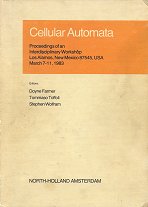
J. Doyne Farmer, Tommaso Toffoli, Stephen Wolfram, eds.
Cellular Automata: Proceedings of an Interdisciplinary Workshop, Los Alamos March 7-11, 1983 (Physica D 10).
North Holland. 1984
(read but not reviewed)
Contents
- • Norman H. Margolus. Physics-like models of computation. Physica 10D. 1984
- • Stephen Wolfram. Universality and complexity in Cellular Automata. 1984
- • Douglas A. Lind. Applications of ergodic theory and sofic systems to Cellular Automata. 1984
- • Michael S. Waterman. Some applications of information theory to Cellular Automata. 1984
- • Peter Grassberger. Chaos and diffusion in deterministic Cellular Automata. 1984
- Encode the 1D CA state
…s-2s-1s0s1s2…
as the 2D point (0.s0s1s2…,
0.s-1s-2…) • "similar"
states are "close" in space (with a bias to similarity near
cell c0, consistent with the Cantor set topology
explained in [Toffoli 1984a] below) • time evolution is a
trajectory in this space • some CA rules have dynamics that
exhibit an "attractor"-like structure (although not completely
identical) in this space
- • T. E. Ingerson, R. L. Buvel. Structure in asynchronous Cellular Automata. 1984
- asynchronous 1D CA investigations • random, and own clock • these
models are more "natural" • some self-organisin
behaviour of synchronous 1D CAs comes from the synchronisation • some
further interesting behaviour appears with asynchronous models
- • Stephen J. Willson. Growth rates and fractional dimensions in Cellular Automata. 1984
- • R. Wm. Gosper. Exploiting regularities in large cellular spaces. 1984
- Optimisation algorithm for 2D CAs, using quadrant decomposition of
cellular space, cacheing of results, and hashing to find previously used
quadrants
- • Gerard Y. Vichniac. Simulating physics with Cellular Automata. 1984
- CAs exactly computable models, and non-numerical simulations • a
naive CA implementation of a spin glass gives poor results
- • Tommaso Toffoli. Cellular Automata as an alternative to (rather than an approximation of) differential equations in modeling physics. 1984
- why CAs are appropraite for direct modelling of physical systems • Cantor
set topology of infinite CAs
- • Stephen M. Omohundro. Modelling Cellular Automata with partial differential equations. 1984
- • Christopher G. Langton. Self-reproduction in Cellular Automata. 1984
- requirement that self-replicator be a universal constructor
is too strong: natural self-replicators (organisms!) aren't universal
constructors • relax therequirement simply to: the "self-replicating"
configuration must treat its stored information both as interpreted
instructions and uninterpreted data • adaptation of
Codd's 1968 universal constructor, with a different transition rule • states
comprise instructions for constructing a new loop • instructions
travel around the loop, memory - uninterpreted • instructions
construct new loop - interpreted
- • Stuart A. Kauffman. Emergent properties in random complex automata. 1984
- N cells with boolean state, each getting input from K
other randomly chosen cells, combined by a randomly chosen boolean
function • K = 2 dynamics properties : number of
states = 2N, yet cycle length, number of distinct
cycles (basins of attraction) ~ N1/2; cycles
relatively stable to small perturbations • canalising
rules, and forcing structures - subgraphs that "crystallise"
at their canalised values - and so partition the remaining graph into
isolated subclusters • as simple models of geneetic
regulatory networks
- • Christian Burks, J. Doyne Farmer. Towards modeling DNA sequences as automata. 1984
- • Steven A. Smith, Richard C. Watt, Stuart R. Hameroff. Cellular Automata in cytoskeletal lattices. 1984
- • Forrest L. Carter. The molecular device computer: point of departure for large scale Cellular Automata. 1984
- • Tommaso Toffoli. CAM: a high-performance Cellular-Automaton Machine. 1984
- support for "watching 2D CA evolution • sequential
processing, special-purpose hardware • 256x256 array of
cells, periodic (toroidal) boundary conditions • each cell
with up to 256 states • 60 timesteps per second display
- • Kendall Preston Jr. Four-dimensional logical transforms: data processing by Cellular Automata. 1984
- • W. Daniel Hillis. The Connection Machine: a computer architecture based on Cellular Automata. 1984
- • James P. Crutchfield. Space-time dynamics in video feedback. 1984
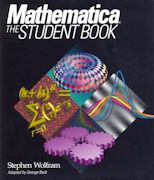
Stephen Wolfram, George Beck.
Mathematica: the Student Book.
Addison-Wesley. 1990
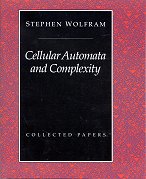
Stephen Wolfram, ed.
Cellular Automata and Complexity: collected papers.
Addison-Wesley. 1994
(read but not reviewed)
Contents
- • Universality and complexity in Cellular Automata. 1984
- • Statistical mechanics of Cellular Automata. Rev.Mod.Phys 55:601-644. 1983
- • Stephen Wolfram, Olivier Martin, Andrew M. Odlyzko. Algebraic properties of Cellular Automata. Comm.Math.Phys 93:219-258. 1984
- • Computation theory of Cellular Automata. Comm.Math.Phys 96:15-57. 1984
- • Undecidability and intractability in theoretical physics. Phys.Rev.Lett 54:735-738. 1985
- • Norman H. Packard, Stephen Wolfram. Two dimensional Cellular Automata. J.Stat.Phys 38:901-946. 1985
- • Origins of randomness in physical systems. Phys.Rev.Lett 55:449-452. 1985
- • Stephen Wolfram, James B. Salem. Thermodynamics and hydrodynamics of Cellular Automata. 1985
- • Random sequence generation by Cellular Automata. Adv.Appl.Math 7:123-169. 1986
- • Approaches to complexity engineering. Physica D 22:385-399. 1986
- • Minimal Cellular Automaton approximations to continuum systems. 1986
- • Cellular Automaton fluids: basic theory. J.Stat.Phys 45:471-526. 1986
- • Cellular Automata. Los Alamos Science 9:2-21. 1983
- • Computers in science and mathematics. Scientific American 251:188-203. 1984
- • Geometry of binomial coefficients. American Mathematical Monthly 91:566-571. 1984
- • Twenty problems in the theory of Cellular Automata. Physica Scripta T9:170-183. 1985
- • Cryptography with Cellular Automata. Crypto'85, LNCS 218:429-432. Springer. 1986
- • Complex systems theory. 1988
- • Cellular Automaton supercomputing. 1988
- • Tables of Cellular Automaton properties. 1986
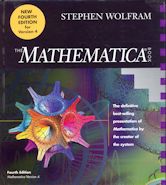
Stephen Wolfram.
The Mathematica Book: 4th edn.
CUP. 1999
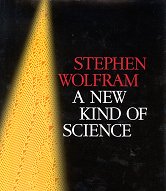
Stephen Wolfram.
A New Kind of Science.
Wolfram. 2002




